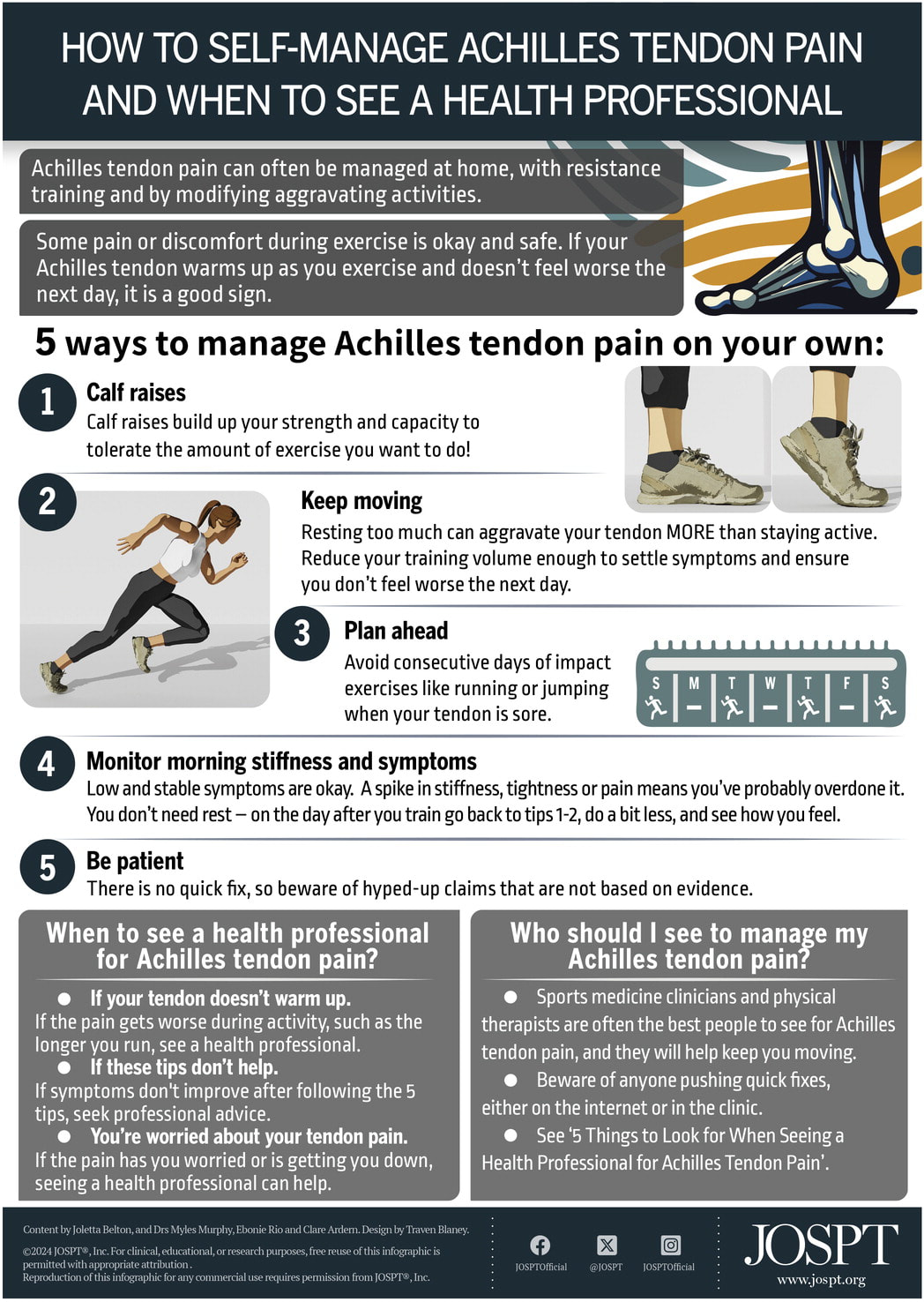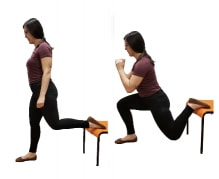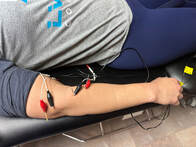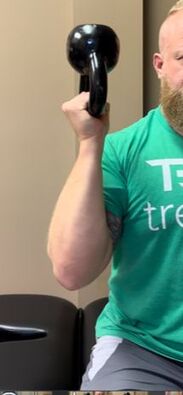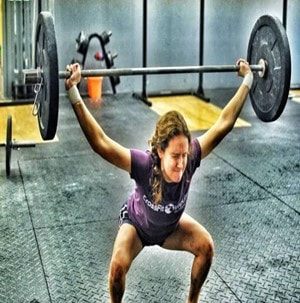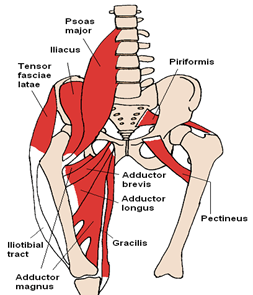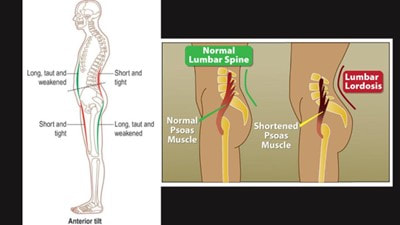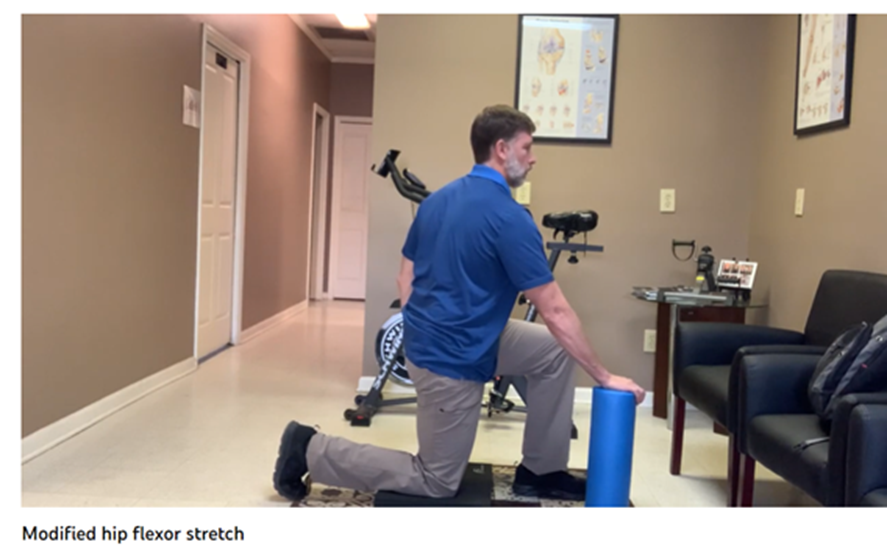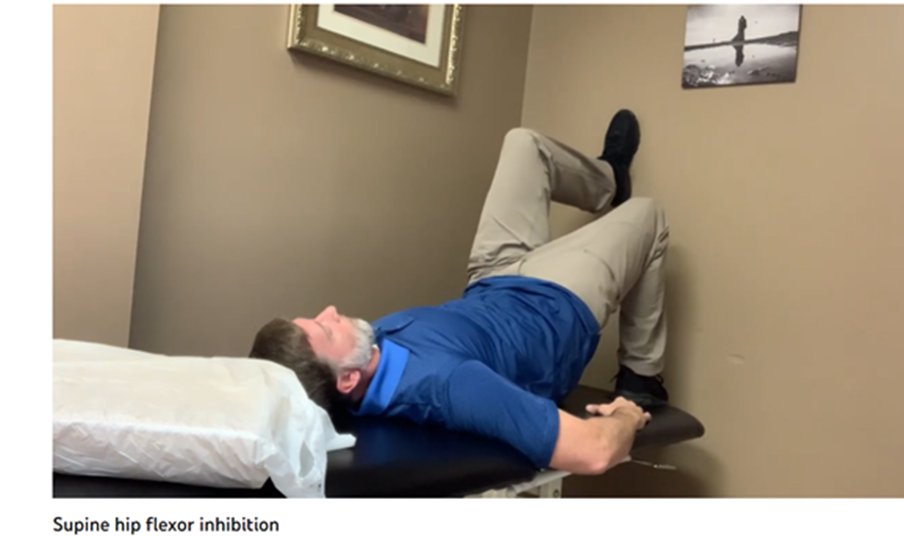|
Injuries aren’t just painful and overwhelming. They can be debilitating, especially when they mean eliminating your participation in sports, crossfit, lifting, running, etc. The good news: Not only does physical therapy help you return to activities you enjoy, but it can also help prevent the loss of strength gains or aerobic fitness you’ve worked so hard for. MYTH: it only takes 3 days to lose all your running fitness ANSWER: FALSE. In general, significant conditioning is lost after 2-6weeks of insufficient training. (grivas) Deeper Dive: Detraining, [is] defined as a partial or complete loss of training-related adaptations as a consequence of training load reduction or training cessation (berryman) As this applies specifically to aerobic or metabolic endurance training: "Coyle et al. observed that seven endurance-trained subjects stopped training for 84 days, and their VΟ2max declined by 7 and 16% in 21 and 56 days, respectively, it then stabilized at that level, which was still 17.3% higher than that of sedentary control subjects. " (grivas) A couple very key facts? These endurance athletes stopped training for 84 DAYS. And despite that, their VO2max was still 17.3% higher than their sedentary counterpart! The hope for you: Without the stimuli of normal training there will be some regression in VO2max, but this is entirely normal. This demonstrates how flexible and strong your body can be and how, with the right training (aka stimuli), your body can bounce right back. Physical therapy can help provide that stimuli in a skilled, specific, and unique way, meeting your needs as an individual and athlete. The Benefits of DetrainingAn unexpected benefit of taking time off from your typical or regular reactionary or athletic activities include: Short periods of detraining may enhance anabolic hormonal milieu and increase lean mass (chen). Within the context of this research article, the author is discussing how short periods of detraining, specifically from cardio-type activities, can actually provide anabolic hormones a window in which you can build MORE lean muscle mass. Many individuals see injury recovery as solely sitting on the couch. The opposite is true. While injured, this provides an opportunity to work other areas, such as building strength in different muscle groups in addition to participating in physical therapy. In Summary: |
| In a recent study published in the July 2023 edition of the Journal of Strength and Conditioning Research, researchers found “maintenance of muscle mass and strength is not superior after home-based resistance training compared with center-based training. However, training continuation seems crucial for the maintenance of muscle mass, irrespective of the training intervention” across participants aged 65 and older. |
One participant group performed low-intensity home resistance training (sit-to-stands, modified push-ups, and TheraBand leg exercises). The other group performed high intensity exercises in a facility with machines (same leg exercises but with machines, lat pull-downs, seated shoulder press machines). Participants had their muscle strength, muscle mass, and function measured at baseline, 6 months of training, 12 months of training, and 6 months post-study. Both groups used the same progression protocol, but neither demonstrated superior effects to the other group in terms of strength and muscle mass.
What does that mean for us?
It is ok to not have to go to the gym for every workout or at all to exercise. Going to the gym has other benefits such as accountability, exposure to new exercises, encouragement from peers, and more, but to maintain strength and muscle mass, you can keep going with your TheraBand and calisthenics exercises at home. Lack of access to a gym does not mean that you cannot work out after therapy ends.
Maggie Duggan, PT, DPT, FDN-1, CF-OL1

Committing to getting healthy, working out more, finally seeing results is a...journey
And one that can come to a grinding halt in on morning with tight, stabbing pain in the heel.
While it's easy to walk it off at first, hit the box, and continue on with the day, it becomes more difficult to ignore as the nagging pain in the heel grows stronger.
And lingers.
And walking becomes nearly unbearable, never mind box jumps and deadlifts.
Did this description sound familiar?
These are all common signs and symptoms of plantar fasciitis.
WHAT IS IT?
"Plantar Fasciitis (PF) is an overuse injury that occurs due to excessive loading of the plantar fascia, possibly related to pronation and low arch height, which flattens the medial arch and increases stress on the fascia"
TRANSLATED: The plantar fascia is a thick band of connective tissue at the bottom of the foot responsible for absorbing load and creating tension to enable walking, running, and jumping. When the origin of the plantar fascia becomes irritated, it becomes painful.
WHAT DOES IT FEEL LIKE? "PF is characterized by pain concentrated at the medial calcaneal tubercle that increases with weight-bearing following periods of non-weightbearing."
TRANSLATED: Usually plantar fasciitis is experienced as a sharp pain at the direct center of the heel, off to the inside of it, or all around it. Typically, it hurts most at the beginning walking after sitting/resting for an extended period of time. The pain can also improve as with continued walking, mobility, general movement, etc.
WHAT CAUSES IT?
SIGNS AN ATHLETE SHOULD NOT CONTINUE TO EXERCISE AND RUN THROUGH PLANTAR FASCIITIS:
While it is possible to continue with an exercise regime despite pain, strong indicators that it’s time to see a physical therapist include:
Consequences could include:
"Continuing to run (and exercise) through pain with plantar fasciitis could result in altered gait. Compared to healthy runners, individuals with PF have been shown to have [altered foot mechanics such as]…greater rearfoot eversion, forefoot sagittal range of motion, and first metatarsal phalangeal joint range of motion.
Further, individuals with PF have lesser vertical ground reaction forces during propulsion, reduced rearfoot center of pressure (COP), reduced impulse, and reduced peak vertical ground reaction force at loading response as compared to healthy individuals "
Translation: When an athlete is struggling through a rough case of plantar fasciitis, foot mechanics will be changed and altered. This can lead to general compensations resulting in further injury, especially during high impact activities such as box jumps, running, etc.
HOW TO FIX PLANTAR FASCIITIS
A well rounded approach including both manual treatment by a physical therapist and exercise is the best rehab routine!
Manual, or hands on, intervention, may include mobilizations of the heel bone to restore calcaneal mobility and soft tissues. This can including blading, dry needling, and more to improve tolerance to symptoms.
Exercises your physical therapist may use during your treatment session include:
And one that can come to a grinding halt in on morning with tight, stabbing pain in the heel.
While it's easy to walk it off at first, hit the box, and continue on with the day, it becomes more difficult to ignore as the nagging pain in the heel grows stronger.
And lingers.
And walking becomes nearly unbearable, never mind box jumps and deadlifts.
Did this description sound familiar?
These are all common signs and symptoms of plantar fasciitis.
WHAT IS IT?
"Plantar Fasciitis (PF) is an overuse injury that occurs due to excessive loading of the plantar fascia, possibly related to pronation and low arch height, which flattens the medial arch and increases stress on the fascia"
TRANSLATED: The plantar fascia is a thick band of connective tissue at the bottom of the foot responsible for absorbing load and creating tension to enable walking, running, and jumping. When the origin of the plantar fascia becomes irritated, it becomes painful.
WHAT DOES IT FEEL LIKE? "PF is characterized by pain concentrated at the medial calcaneal tubercle that increases with weight-bearing following periods of non-weightbearing."
TRANSLATED: Usually plantar fasciitis is experienced as a sharp pain at the direct center of the heel, off to the inside of it, or all around it. Typically, it hurts most at the beginning walking after sitting/resting for an extended period of time. The pain can also improve as with continued walking, mobility, general movement, etc.
WHAT CAUSES IT?
- Flat feet, low arches, over pronation
- Increased workload such as an increase in walking, running, sprinting, jumping, or other high impact activities
- Decreased foot dynamic stability (balance) resulting in "altered neuromuscular control of whole-body dynamic stability"
- Altered gait pattern
- Decreased intrinsic foot muscle volume
SIGNS AN ATHLETE SHOULD NOT CONTINUE TO EXERCISE AND RUN THROUGH PLANTAR FASCIITIS:
While it is possible to continue with an exercise regime despite pain, strong indicators that it’s time to see a physical therapist include:
- Pain does not gradually disappear after walking
- No amount of warming up decreases symptoms
- Inability to walk normally due to pain
- Pain is regularly 4/10 or greater
- It's difficult to ignore the symptoms during daily life
Consequences could include:
"Continuing to run (and exercise) through pain with plantar fasciitis could result in altered gait. Compared to healthy runners, individuals with PF have been shown to have [altered foot mechanics such as]…greater rearfoot eversion, forefoot sagittal range of motion, and first metatarsal phalangeal joint range of motion.
Further, individuals with PF have lesser vertical ground reaction forces during propulsion, reduced rearfoot center of pressure (COP), reduced impulse, and reduced peak vertical ground reaction force at loading response as compared to healthy individuals "
Translation: When an athlete is struggling through a rough case of plantar fasciitis, foot mechanics will be changed and altered. This can lead to general compensations resulting in further injury, especially during high impact activities such as box jumps, running, etc.
HOW TO FIX PLANTAR FASCIITIS
A well rounded approach including both manual treatment by a physical therapist and exercise is the best rehab routine!
Manual, or hands on, intervention, may include mobilizations of the heel bone to restore calcaneal mobility and soft tissues. This can including blading, dry needling, and more to improve tolerance to symptoms.
Exercises your physical therapist may use during your treatment session include:
- Toe yoga: attempt to lift on the large toe, keeping remaining toes on the floor. Hold for 2 secs. Relax. Repeat 10x
- Calf stretches
- Foot Doming: Reps + Sets: "When performed 3 minutes a day for 4 wk, this exercise can reduce navicular drop (arch collapse) by 14.2% "
If you’re wondering whether it’s time to seek out professional care, it’s time.
Reach out to us by filling out a form on our website.
We’re excited to work with you!
Marie Whitt, PT, DPT
References:
Cheung, R. et al. (2015) “Intrinsic foot muscle volume in runners with and without chronic bilateral plantar fasciitis,” Physiotherapy, 101. Available at: https://doi.org/10.1016/j.physio.2015.03.414.
Kelly, D.K., Wiegand, K. and Freedman Silvernail, J. (2022) “Dynamic Stability in runners with and without plantar fasciitis,” Gait & Posture, 96, pp. 301–305. Available at:
https://doi.org/10.1016/j.gaitpost.2022.06.003.
Osborne, J.W.A. et al. (2019) “Muscle function and muscle size differences in people with and without plantar heel pain: A systematic review,” Journal of Orthopaedic & Sports Physical Therapy, 49(12), pp. 925–933. Available at: https://doi.org/10.2519/jospt.2019.8588.
Wiegand, K., Tandy, R. and Freedman Silvernail, J. (2022) “Plantar fasciitis injury status influences foot mechanics during running,” Clinical Biomechanics, 97, p. 105712. Available at: https://doi.org/10.1016/j.clinbiomech.2022.105712.
Cheung, R. et al. (2015) “Intrinsic foot muscle volume in runners with and without chronic bilateral plantar fasciitis,” Physiotherapy, 101. Available at: https://doi.org/10.1016/j.physio.2015.03.414.
Kelly, D.K., Wiegand, K. and Freedman Silvernail, J. (2022) “Dynamic Stability in runners with and without plantar fasciitis,” Gait & Posture, 96, pp. 301–305. Available at:
https://doi.org/10.1016/j.gaitpost.2022.06.003.
Osborne, J.W.A. et al. (2019) “Muscle function and muscle size differences in people with and without plantar heel pain: A systematic review,” Journal of Orthopaedic & Sports Physical Therapy, 49(12), pp. 925–933. Available at: https://doi.org/10.2519/jospt.2019.8588.
Wiegand, K., Tandy, R. and Freedman Silvernail, J. (2022) “Plantar fasciitis injury status influences foot mechanics during running,” Clinical Biomechanics, 97, p. 105712. Available at: https://doi.org/10.1016/j.clinbiomech.2022.105712.
“How do I fix my weak glutes?”
"My glutes won't turn on."
“What are the best glute exercises I should be doing?”
"My glutes won't turn on."
“What are the best glute exercises I should be doing?”
INJURY QUIZ:
Ever had ANY of these injuries before?
general difficulty "turning the glute muscle on"
But there's a twist.
There's a difference between glutes "being on" and activated vs. glutes being strong.
Ever had ANY of these injuries before?
- ITB issues
- Knee pain
- Achilles tendonitis
- Shin splints
general difficulty "turning the glute muscle on"
But there's a twist.
There's a difference between glutes "being on" and activated vs. glutes being strong.
Case in point:
"Electromyography research has shown that the single-leg squat and clam shells activate the gluteal musculature. A variety of hip extensibility exercises have been proven in the literature to increase hip range of motion in runners. No research measured the effects of a combined hip strengthening protocol with a hip stretching protocol on the presence of lower crossed syndrome in high school runners and the effect on running economy and performance."
TRANSLATION:
While fancy EMG studies say single leg squats and clam shell exercises are some of the best when it comes to activating glute muscles…
Some exercises work better than others.
Meaning, these exercises may be a great place to start, but for an athlete who is routinely working out multiple times a week at an intense level (crossfit, running, baseball, soccer, etc)...
Clam shells just don’t cut it.
So while it remains true that to build strong glutes, FIRST the glutes need to be "on" or activated, each athlete’s glute activation exercises will be slightly different.
HOW DO I TURN ON MY GLUTES?
The most common self-treat method:
While the “do it yourself” method is possible, it:
Or…steal exercises directly from physical therapy clinicians, especially the ones used in the clinic on a regular basis.
After finding the correct glutes exercises (with the help of physical therapy clinician), it becomes easier to feel glutes firing and activating,
Benefits of strong glutes:
"Electromyography research has shown that the single-leg squat and clam shells activate the gluteal musculature. A variety of hip extensibility exercises have been proven in the literature to increase hip range of motion in runners. No research measured the effects of a combined hip strengthening protocol with a hip stretching protocol on the presence of lower crossed syndrome in high school runners and the effect on running economy and performance."
TRANSLATION:
While fancy EMG studies say single leg squats and clam shell exercises are some of the best when it comes to activating glute muscles…
Some exercises work better than others.
Meaning, these exercises may be a great place to start, but for an athlete who is routinely working out multiple times a week at an intense level (crossfit, running, baseball, soccer, etc)...
Clam shells just don’t cut it.
So while it remains true that to build strong glutes, FIRST the glutes need to be "on" or activated, each athlete’s glute activation exercises will be slightly different.
HOW DO I TURN ON MY GLUTES?
The most common self-treat method:
- try a whole bunch of different exercises
- Spend hours deciphering whether the glute exercises are “working or not”.
While the “do it yourself” method is possible, it:
- Takes a lot of time
- Results in frustration
- Leads to a lot of “Wrong exercises” first
Or…steal exercises directly from physical therapy clinicians, especially the ones used in the clinic on a regular basis.
After finding the correct glutes exercises (with the help of physical therapy clinician), it becomes easier to feel glutes firing and activating,
Benefits of strong glutes:
- decrease or resolve hip pain
- decrease hip flexors tightness
- decrease or resolve knee pain
- decrease or resolve Achilles tendonitis
- decrease or resolve ITB syndrome symptoms
BEST GLUTE ACTIVATING EXERCISES: 3 rounds using a medium to heavy weight
While this circuit can help relieve pain and address lingering glute weakness, if pain persists during or after these exercises, it’s best to consult with a physical therapy clinician to determine root causes and appropriate individualized treatment.
Have questions about whether it’s time to schedule an appointment? Fill out any contact form on our website.
We can’t wait to see you!
Marie Whitt, PT, DPT

Elbow pain in lifters is a common and an especially frustrating occurrence, which can derail your goals, cause lost gym time, and create a great deal of misery.
Elbow pain in weightlifters is generally attributed to an overuse or inflammatory issue of the tendons, muscles, and other soft tissues around the elbow. Pain and symptoms can be at the inside of elbow (sometimes called golfer’s elbow), the outside of the elbow (tennis elbow), or on the back side of the elbow (triceps tendonitis). Additionally, peripheral nerves running through this area can also be over tensioned or compressed and create symptoms. If too much stress is locally placed on these areas, the tissues can become irritated and inflamed. Often the onset of symptoms happens with:
Elbow pain in weightlifters is generally attributed to an overuse or inflammatory issue of the tendons, muscles, and other soft tissues around the elbow. Pain and symptoms can be at the inside of elbow (sometimes called golfer’s elbow), the outside of the elbow (tennis elbow), or on the back side of the elbow (triceps tendonitis). Additionally, peripheral nerves running through this area can also be over tensioned or compressed and create symptoms. If too much stress is locally placed on these areas, the tissues can become irritated and inflamed. Often the onset of symptoms happens with:
- Dramatic increases in volume (Think Murph training)
- Increase in load/weights (Trying to to hit a new PR)
- Introduction of new exercises or positions with high mobility demands at the shoulder and wrist (Learning snatches or handstand walks. Doing Open workouts with new movements.)
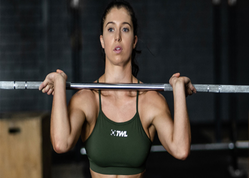
What are the most common complaints of lifter’s elbow?
- Dull pain and ache in elbow joint when lifting, gripping, or holding
- Inside elbow pain with a low bar back squat or during pullups
- Pain on outside of elbow with overhand gripping a barbell such as when pulling a snatch or deadlift
- Achiness and pain behind the elbow in the front rack position or with certain triceps exercises
- Burning feelings or pain in the elbow joint after working out
- Difficulty bending and straightening the elbow after workouts
- Weak grip strength when lifting dumbbells or barbells
- Tenderness, swelling and soreness in elbow after lifting
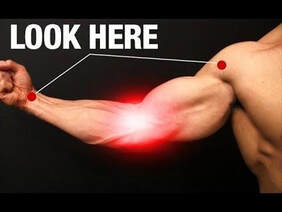
What causes it?
The standard explanation is an overuse or over stress of tissues around the elbow as explained above. This can be the result, but not necessarily a good explanation of the cause. Predominantly, complaints of elbow pain and irritation are the symptoms of an issue that is happening upstream or downstream from the elbow. Similarly to the knee, the elbow is stuck between two other major joint areas. If the hip or ankle/foot cannot do their jobs due to mobility or strength deficits, the knee joint and tissues around it will have to “pick up the slack” and take on extra stress.
The elbow will act in a similar fashion if the shoulder and wrist/hand cannot meet the demands of the task imposed upon them. Examples of this include increased inside elbow stress if one lacks mobility in the shoulder, trunk, or wrist while in a front rack or catching a clean. Any activity involving a barbell or pull up bar will put the hands in a fixed position, The body must find a way to get into a shape to successfully perform the lift or task. If mobility is lacking in the wrist, shoulder, or even the spine, the elbow is prime candidate to bear the brunt of extra stress. This is an underappreciated component and many times why rehab programs that only address the local area without looking at the whole body are not successful
The standard explanation is an overuse or over stress of tissues around the elbow as explained above. This can be the result, but not necessarily a good explanation of the cause. Predominantly, complaints of elbow pain and irritation are the symptoms of an issue that is happening upstream or downstream from the elbow. Similarly to the knee, the elbow is stuck between two other major joint areas. If the hip or ankle/foot cannot do their jobs due to mobility or strength deficits, the knee joint and tissues around it will have to “pick up the slack” and take on extra stress.
The elbow will act in a similar fashion if the shoulder and wrist/hand cannot meet the demands of the task imposed upon them. Examples of this include increased inside elbow stress if one lacks mobility in the shoulder, trunk, or wrist while in a front rack or catching a clean. Any activity involving a barbell or pull up bar will put the hands in a fixed position, The body must find a way to get into a shape to successfully perform the lift or task. If mobility is lacking in the wrist, shoulder, or even the spine, the elbow is prime candidate to bear the brunt of extra stress. This is an underappreciated component and many times why rehab programs that only address the local area without looking at the whole body are not successful
| What can PT do to help?
|
local structures of the elbow, but globally treating whole system and how to integrate the body together, allowing more efficient movement and improved distribution of forces.
If you are experiencing lifter’s elbow, don’t wait and hope it will go away. Contact ProFormance Therapy and Wellness today!
Kevin Steen, PTA
May 15th at 12 pm.
Be sure to sign up for this year's Wayne C. Gardener Memorial Golf Classic at the Huntsville Country Club sponsored by T&W Operations! We will be there helping golfers before and after the event. Proceeds go to Helping a Hero. Do not miss out on a fun day of golf!
Who is Helping a Hero? What has Helping a Hero done locally?
Register Here
Who is Helping a Hero? What has Helping a Hero done locally?
Register Here
Do you have tightness, tension or pinching in the front of your hip? How about low back tension or pain? A limited ability to get the hip flexor muscles to relax and lengthen can be a contributor to these issues. Additionally, limited hip motion due to tension in the hip flexors will make it difficult to hit good positions with lifts such as snatches and overhead squats. Limited hip motion will also shorten stride length with running.
What are hip flexors?
Hip flexors a group of muscles on the front side of the body that connect the spine and pelvis to the leg. Typically, the most common action they are thought to perform is lifting the leg in front of the body similar to marching. Another, less appreciated aspect of these muscles is that they attach to the spine and pelvis, influencing their position. Commonly, this results in the pelvis and spine getting pulled forward and down. This orientation limits hip mobility and contributes to excess tension up the line into the back and even affects the shoulder and neck.
photo credit: Beth ohara
Traditional hip flexor stretch (What’s the deal?)
If you Google hip flexor stretches, the most common image you will see is some variation of the position below:
If you Google hip flexor stretches, the most common image you will see is some variation of the position below:
image credit: Tnation.com
The idea is to lengthen and stretch the tight hip flexor muscles of the back leg. While you can definitely feel a stretch sensation in this position, it might not be the most effective way to get the change you desire.
Why not?
To truly lengthen the hip flexors and improve your ability to extend the hip, you must be able to change the position of the femur (leg) relative to the pelvis. In the picture above, as she moves into the stretch, you can see her low back extends and where her belt line would be tipping forward. If she has tight hip flexors and limited hip extension, her hip joint stopped moving well before she got to this position and the majority of the movement happened at the spine and pelvis.
Why not?
To truly lengthen the hip flexors and improve your ability to extend the hip, you must be able to change the position of the femur (leg) relative to the pelvis. In the picture above, as she moves into the stretch, you can see her low back extends and where her belt line would be tipping forward. If she has tight hip flexors and limited hip extension, her hip joint stopped moving well before she got to this position and the majority of the movement happened at the spine and pelvis.
Image credit: Conor Harris
You can most definitely still feel a “stretch” in the front of the hip and leg, and get a temporary reduction in tension but most likely will not get lasting changes in hip mobility and will potentially reinforce the forward tilting position of the pelvis and back.
What to do?
A big consideration to making this half kneeling position more effective is to appreciate not only what position the leg is in but also the spine and pelvis. Then, you can get a more accurate picture of where your hip motion actually stops and work from there.
2 VARIATIONS:
A modification of the half kneeling positioning.
(credit Zac Cupples for exercise)
What to do?
A big consideration to making this half kneeling position more effective is to appreciate not only what position the leg is in but also the spine and pelvis. Then, you can get a more accurate picture of where your hip motion actually stops and work from there.
2 VARIATIONS:
A modification of the half kneeling positioning.
(credit Zac Cupples for exercise)
- Get into “superhero landing” pose.
- Slightly posterior tilt (tuck) your pelvis
- Reach into the block/roller to push yourself away, (Don’t’ overly round your back)
- Find the first barrier of resistance or stretch, then stay here for several breaths.
- As the muscles relax, you can move up into a higher stance, maintaining the slight pelvic tilt.
For the video on how to do this stretch: https://youtu.be/KbmTd_yU4WI
Supine “half kneeling position”
- Lie down on floor/table, with one foot on the wall and the other foot on the ground.
- Perform a slight pelvic tilt/tuck, and maintain it throughout the movement.
- Have the intention to “pull” your foot down the wall and “push” through the foot on the ground to lift your hips off the table.
- Hold the top position for 3 seconds, then slowly reverse and lower back down.
- Perform in 3-4 sets of 10 reps each side
You can use at Thomas Test to do a test/retest and check your hip extension capabilities
- Lie on table/bed hugging on leg to your chest
- Allow the other leg to extend down towards the floor.
- If the down leg does not reach the table, and “floats” in the air, this is an indication of hip flexor tightness.
Check your hips, give these exercises a try, and get those hip flexors to melt and those hips moving like a BOSS.
Kevin Steen, PTA
Click above for details on any promotions being offered or special events to catch the team at.
Archives
July 2024
March 2024
January 2024
November 2023
September 2023
July 2023
May 2023
April 2023
March 2023
July 2022
April 2022
March 2022
October 2019
July 2019
June 2019
January 2019
December 2018
November 2018
October 2018
September 2018

